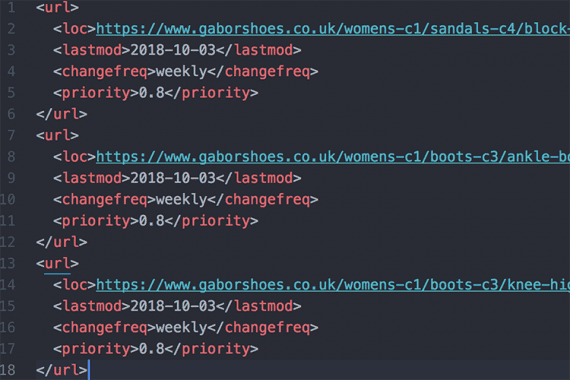
Sitemaps notify search engines which pages on a site should be crawled, and may help online search engine discover and index those pages.While sitemaps can be a simple text file noting the URLs of all of the pages you ‘d like to have indexed, they can also be an XML file bring more information.Are Sitemaps Required?No, your ecommerce website does not need a sitemap. That is the short answer. If your website is well developed, with a navigable hierarchy and proper links, search engine spiders need to have the ability to discover your pages and< a href =https://www.practicalecommerce.com/seo-7-reasons-site-indexation > index them. There are several cases where Google andother
online search engine do, however, recommend a sitemap. A sitemap can assist discovery on a big site with many pages. It can help a website with great deals of material pages linked by just a couple of links, such as item detail pages. And a sitemap can help a brand-new website that may not have lots of incoming links.As Google
explained sitemap generation code libraries.
Simply put, you need to not need to develop a sitemap by hand for your ecommerce company. Comprehending how sitemap markup works and what it interacts might assist your business’s search engine optimization efforts.

< img src= https://www.practicalecommerce.com/wp-content/uploads/2018/10/100218-sitemap-example-570x380.png alt width =570 height= 380 > An XML sitemap can help search engines find and index pages on your ecommerce site.XML Sitemap Format XML sitemaps are the
most popular format for sharing link info with search engines.The XML schema for the sitemaps protocol enables
XML schema, which at the time of writing was variation 0.9.< urlset xmlns=" http://www.sitemaps.org/schemas/sitemap/0.9 "> ... For each page listed in the XML sitemap, there ought to be a URL tag. This tag is the parent, and all of the other tags that explain a page are this tag's kids.
< urlset xmlns= "http://www.sitemaps.org/schemas/sitemap/0.9 ">< url > …. …. …. There are at least two possible child
< url >.< loc > https://example.com/mens-hats.< lastmod > 2018-09-30. .< url >.< loc > https://example.com/ladies-hats.< lastmod > 2018-09-14.
<. I'll describe eachhttps://example.com/mens-hats First, supplies the canonical page URL. This is the official version of the that can be done programmatically. Do not include session IDs or criteria. 2018-09-30 The lastmod tag merely tells the search engine the last time the page in concern was altered. The date ought to be noted as a four-digit year, two-digit month, and two-digit day format.The lastmod tag sitemaps report in the Google Search Console. Then go into the relative URL for the sitemap-- for instance:/ sitemap.xml-- and click submit.For Bing, navigate to the Bing Web Designer Tools, open the
" Configure My Website "section, and select" sitemaps. "Then get in and send the sitemap URL.Finally, you may also send the sitemap with an HTTP GET request or ping. When you go to a particular URL and provide your sitemap address as a parameter (see the examples for Google and Bing below), the search engine will catch that address. This can be done programmatically, however even pasting the link in a browser's address bar will work.If your sitemap were at https://example.com/sitemap.xml, you would use that address at the end of the GET demand URL. Notification how the sitemap URL fits into the ping addresses below.To Google.http:// www.google.com/ping?sitemap=https://example.com/sitemap.xml!.?.! To Bing.http:// www.bing.com/ping?sitemap=https://example.com/sitemap.xml

Leave a Reply